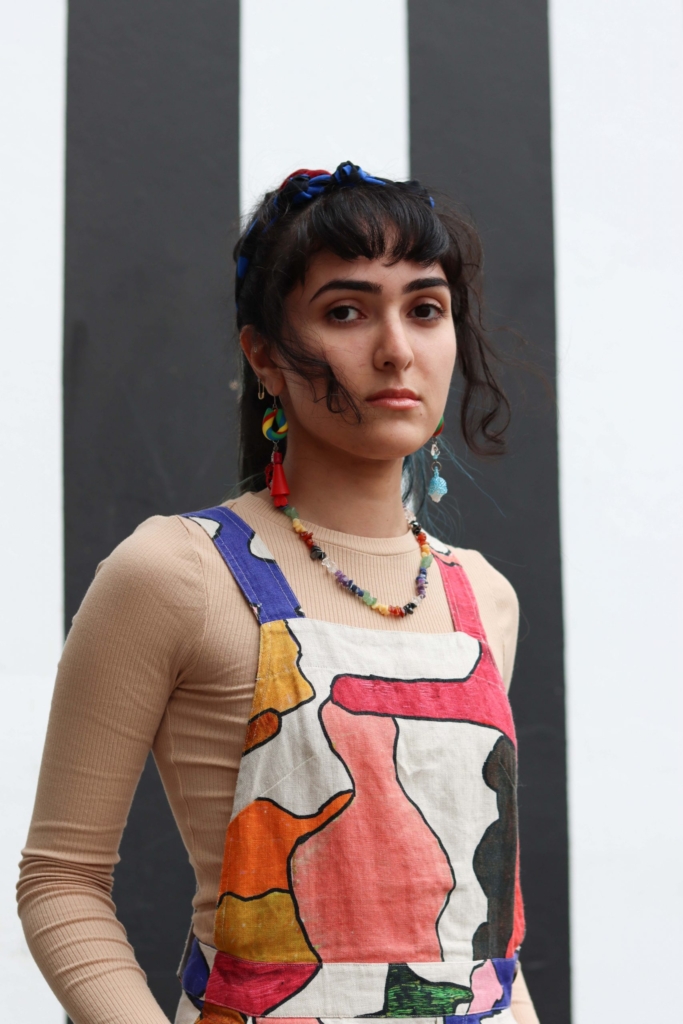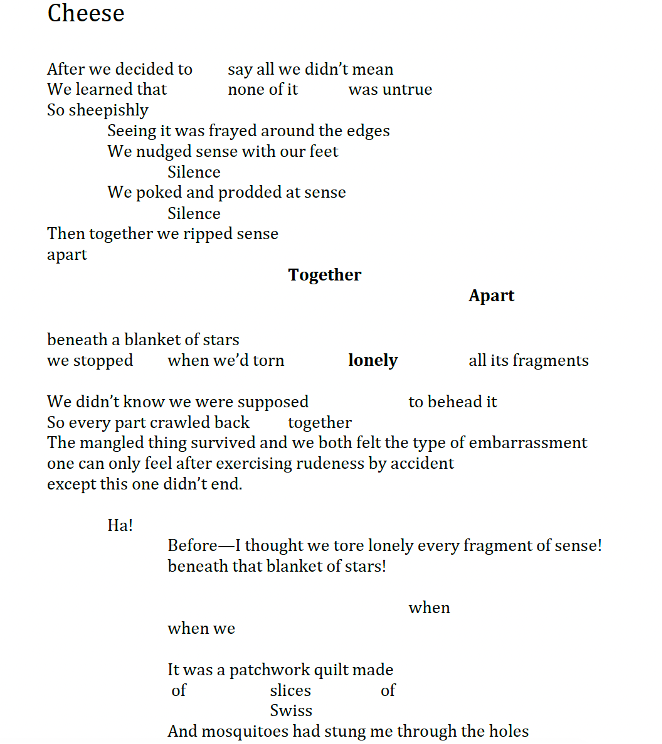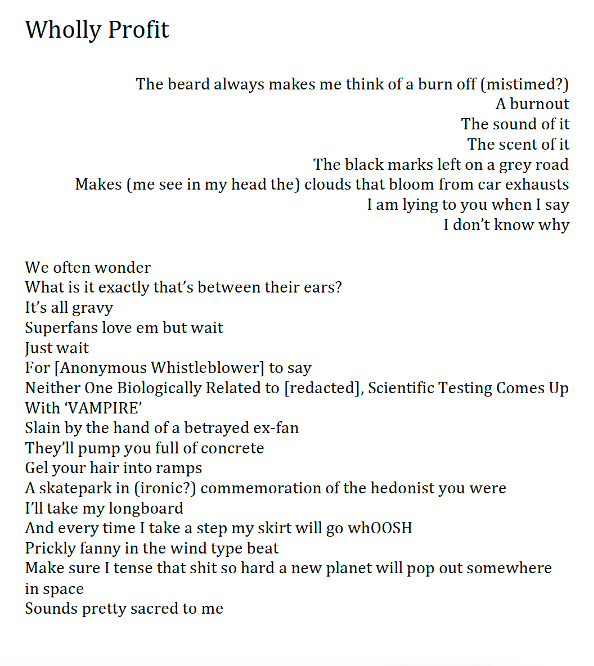Unpacking ‘Woven Frays’ with Baran Rostamian
In this interview, we learn more about Baran Rostamian and the time behind her debut collection, Woven Frays.

Centre for Stories first met Baran when she applied as a mentee for our Inclusion Matters program as a CaLD writer. She later joined us through our Writing Change, Writing Inclusion hot desk fellowship, and has remained involved with Centre for Stories through journal contributions, workshop appearances, and an internship. Baran’s work has been published in Pulch Mag, The Tiger Moth Review, Limina, Singapore Review of Books, and Centre for Stories’ anthology To Hold the Clouds.
Centre for Stories (CFS): Can you tell us how this poetry collection, Woven Frays, came to be?
Baran Rostamian (BR): Well, a lot of these poems were living in my notes app. They’d probably still be living there if my friend, Luoyang Chen, hadn’t reminded me about this project and that I needed to apply. Some of the poems in the book came to fruition because of university assignments I had submitted for creative writing units, such as the Writing the Environment unit.
CFS: How did you react when you first heard that your poems would be getting published?

BR: After I submitted my manuscript, I had to wait a few weeks for the outcome. I was queasy for that entire period. I actually had to limit checking my email to no more than three times per day before it got too out of hand. When Logan emailed me the good news, my initial reaction was disbelief and maybe a bit of screaming, but I was so excited that I can’t exactly remember.
CFS: Writing a poetry collection can be a long process, often with revision after revision. What was it like working with your editor throughout the process?
BR: Marise Phillips, my editor, dedicated so many hours of her time to Woven Frays. I’m so grateful. There was an entire week where we had full, day-long Zoom meetings discussing and picking apart every little bit of the book. Somehow the experience was rewarding, enjoyable, and excruciating all at the same time. The process taught me so much more than I expected it would – thanks again, Marise.
CFS: This book sits within a series of poetry collections within the Green Leaves/Red River project in collaboration with Red River Press in Delhi. What is something cool/fun/challenging that has come up during this process?
BR: It’s hard for me to choose one thing, but I think it’s really cool how other writers just give up their time to give feedback and write endorsements. It felt like a bit of a full circle moment when I comprehended that Dr Amy Lin, who had taught me at university for Writing the Environment, was printing, annotating, and scanning my poems (some of which were from that unit’s assignment), and that those poems would be printed in a book!
CFS: Woven Frays is your debut poetry collection (a first of many, we hope!). What has met your expectations and what has been awkward or unexpected?
BR: I had no idea I would find it so hard to settle on a book cover. I was meant to compile a folder of inspo to help with the design, but no matter what, I could not settle on a cohesive selection – I wanted everything! I liked little bits of lots of different styles and there was no way they could all be cohesively drawn together. So, in the end, I knew I had to use a picture for the cover or it would never exist. The picture I chose is a retinal image of my eye, and I feel like as the cover it just makes sense.
CFS: Is there a poem from this collection you’d like to share with our readers?
BR: I couldn’t pick one, so I’ve picked two, which I think are quite different. I know what they mean to me, but I think as with most poetry, ultimately it doesn’t really matter what I think it means because readers are free to make it their own meaning. Some poems might really speak to you and resonate with you, and you might find yourself fumbling your way through others. I think that’s essentially how the experience of life goes for us all. Sometimes we know what we’re doing and other times we’re clutching at straws, desperate to make meaning. So, I’ll let you weave new meaning, breathe new life into phrase.


About Baran
Baran Rostamian is a poet and writer based in Perth, Western Australia. As the child of first-generation immigrants, Baran was born in Esfahan, Iran, and first attended kindergarten unable to speak English. The subject swiftly became her favourite. In her spare time, Baran repurposes junk into accessories. You can follow her on Instagram @baran.writes & @trashy.com.au.
Praise for Woven Frays
Like threads of gold patching up an old jar, Baran’s poems remind us of the connections between language and country, self-hood and family, fictions and truths. At times unnerving in their intimacy, at others, elusive in their symbolism, these poems both delight and disturb, which, surely, is the purpose of poetry. Woven Frays is an astonishing debut and I look forward to reading more from this fine poet.
– Rashida Murphy (author of The Historian’s Daughter)
Rostamian’s poems speak with a finely tuned defiance. The voice crackles, spits and purrs. Her poetry captures the everyday moments where something suddenly matters. Woven Frays makes you feel the sharp pain of being overwhelmed by the world’s demands, and then the duller pain of its disappointments. But through all this there is an electricity generated by the surprise of hope and the possibilities of the word.
– Tony Hughes-D’Aeth (author of Like Nothing on this Earth)
Green Leaves / Red River is an international publication project by Centre for Stories in partnership with Red River Press based in Delhi.
The project supports eight poets from CALD backgrounds to publish a full manuscript of poetry. The project also provides two editorial fellowships to emerging editors from CALD backgrounds. Editorial Fellows work with the writers to develop a manuscript of high literary standard. The collections will be published over two years and sold individually as part of a series.
This project is possible with funding from the Department of Local Government, Sport and Cultural Industries.